【Report】SAA-Ethiopia Country Director joined a visit to India to learn about sustainable and regenerative agricultural commercialization
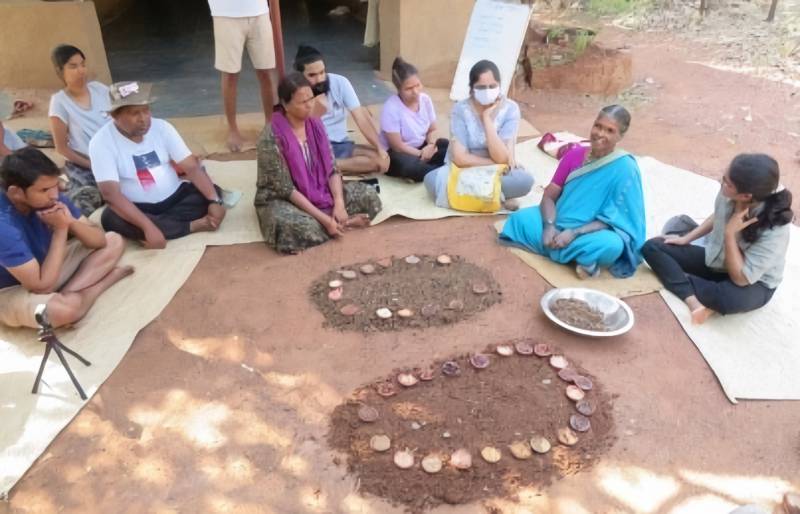
On March 5, 2022, an Action Coalition for Sustainable and Regenerative Agricultural Commercialization Clusters in Ethiopia was formed, led by the World Resources Institute's Food and Land Use Coalition (FOLU) project. Accordingly, a one-week cross-country learning visit (March 26-April 2, 2023) to Telangana State of India in the Hyderabad was organized and sponsored by the WRI/FOLU Ethiopia. Fentahun Mengistu (CD) and Melese Liyhe (TC-RA) from Sasakawa Africa Association (SAA) joined a team of 11 people from the Ethiopian Sustainable and Regenerative Agriculture Action Coalition member organizations: the Ministry of Agriculture (MoA), the Agricultural Transformation Institute (ATI), the Ethiopian Institute of Agriculture (EIAR), SAA, and the WRI's FOLU project of Ethiopia.
The purpose of the visit was to learn from Indian experiences in sustainable and regenerative agriculture that can be applied in Ethiopia, particularly in agricultural commercialization clusters (ACCs) and farmer production clusters (FPCS).
The learning event was divided into three parts: a two-day field trip, a one-day workshop, and a one-day wrap-up meeting. The field visits took place in the districts of Vikarabad and Sanga Reddy, while the workshop was held in Hyderabad City.
For the details, please download the full report from here:
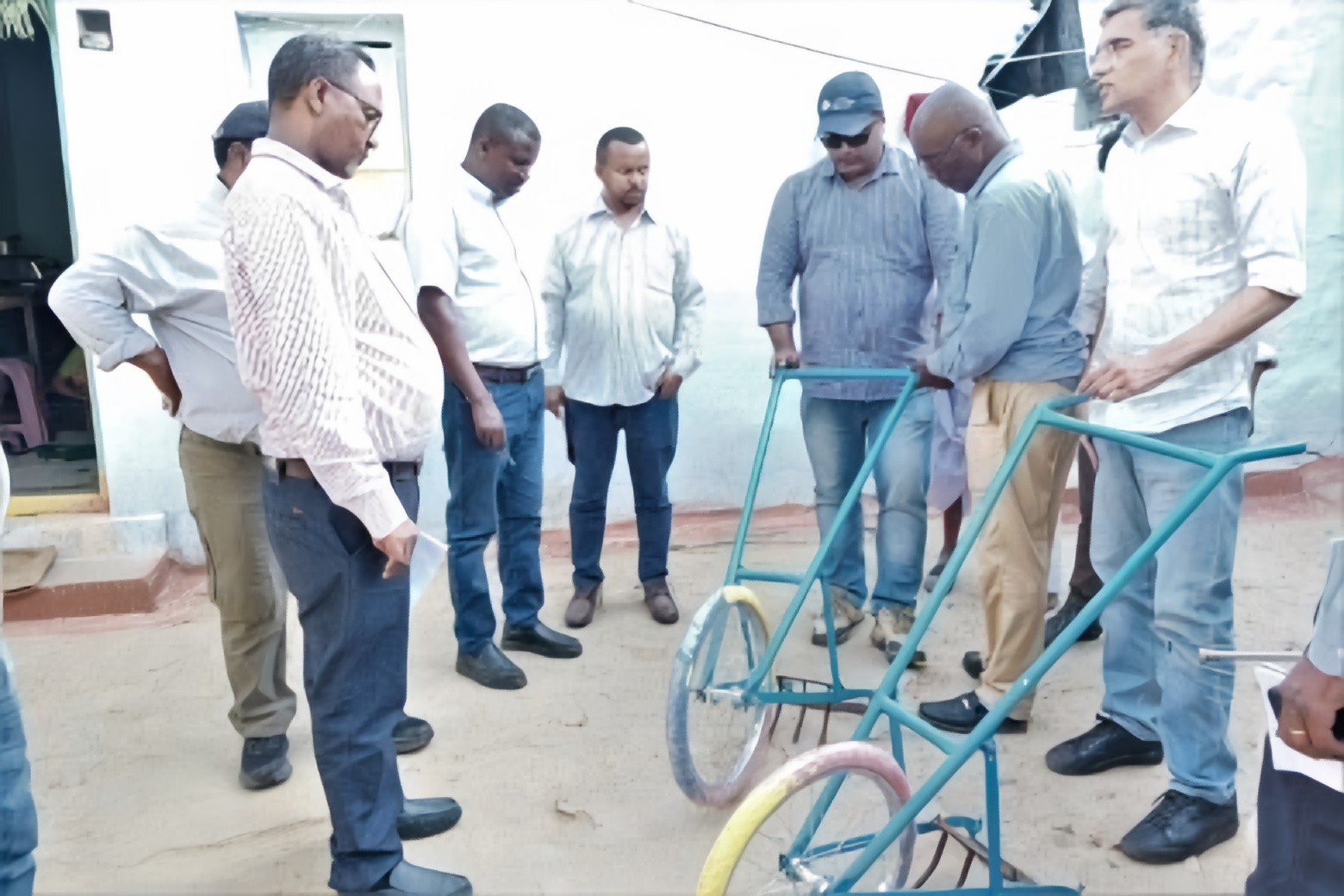
Some of the lessons learned (excerpt):
- Government commitment is essential for change to occur, as seen in India's green and white revolutions
- Agriculture policies in India protect and assist both producers and consumers. Minimum price support programs must be accompanied by purchasing and distribution to consumers via food assistance programs if they are to be effective.
- Agriculture, both rain-fed and irrigated, must be developed in a balanced way in the country. In this regard, rather than focusing on large-scale irrigation, the country should prioritize small-scale irrigation, including rainwater harvesting.
- It is more important to improve farmers' welfare, such as access to health care and education, than to simply increase their income
- The levers that can help natural (regenerative) farming to thrive are government support, knowledge sharing, and farmer-to-farmer extension
- Natural farming would take 8-10 years to become realized
- According to the natural farming principle, if a favorable environment for microbial life is created, water can be extracted from dew and plants can grow with little water. Bio-stimulants such as manure, urine, and jaggery concoctions can help with creating favorable soil conditions
- For regenerative/natural farming to thrive, a paradigm shift in mindset is required, as well as the development of new value chains and markets
- In order to mitigate the impact of agrochemicals, a mechanism for reporting input sales by agro-dealers is required. It is also critical to select a franchise model that rewards service rather than sales volume, as the latter encourages the use of more pesticides
- Crop diversification necessitates a farm-to-fork approach, with tapering incentives and agriculture interventions such as custom hiring
- The Indian government, which already has a National Mission for Sustainable Farming, is reportedly establishing a National Mission for Natural Farming, as well as developing local natural farming certification mechanisms. On the other hand, the government is reorienting farmers to its needs by subsidizing seeds and fertilizers for a select of number of crops, which is at odds with natural/regenerative/sustainable farming. We noted a rivalry between achieving environmental goals and ensuring food security. In general, it is possible to conclude that, as in other places, regenerative farming is still in its infancy and yet focused on pilot projects than on large-scale farming transitions in India
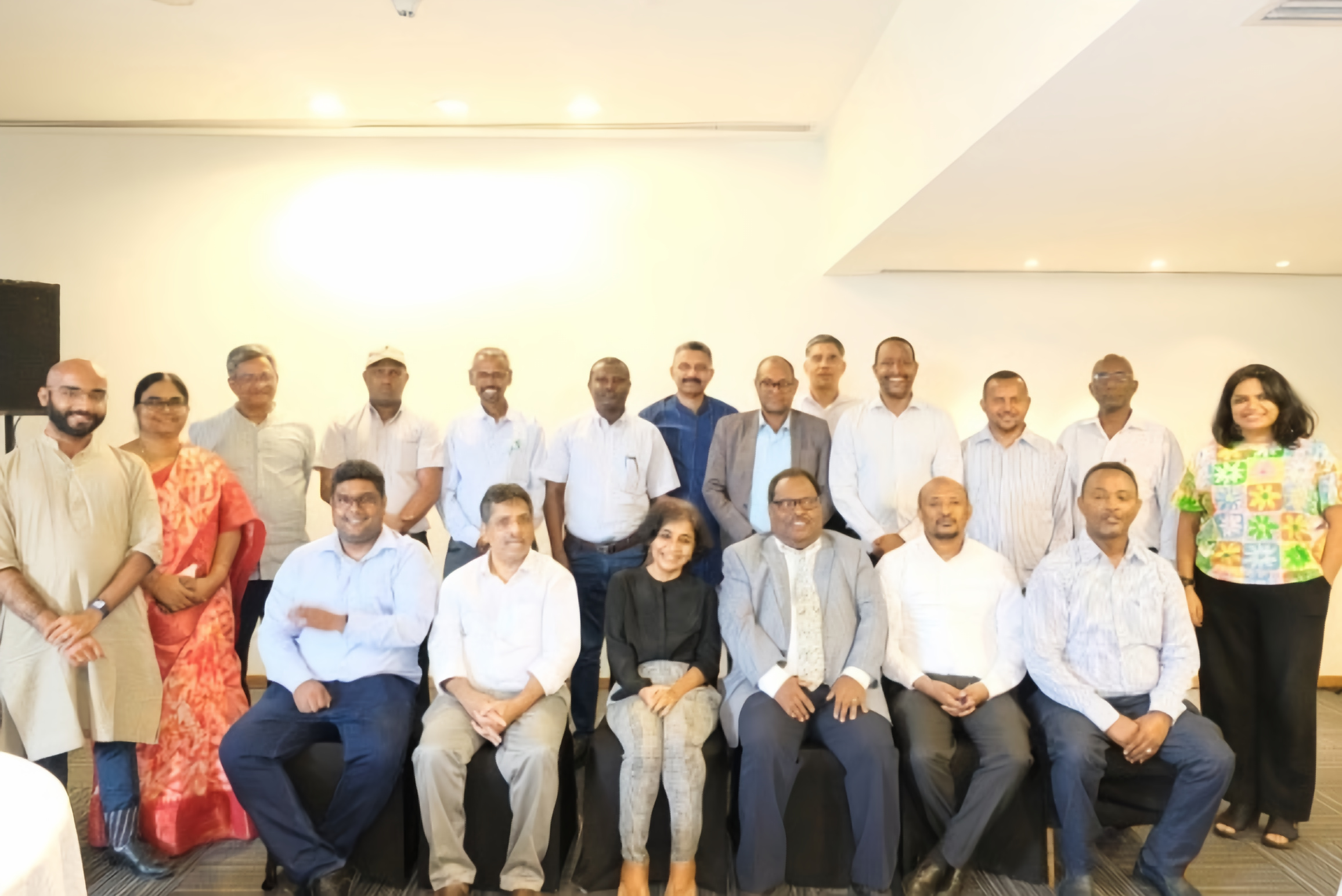 Group photo of workshop participants
Group photo of workshop participantsRecommendation (excerpt):
- SAA may need to test out natural farming principles and products such as permaculture, and use of cattle manure/urine-based bio-stimulants. Further learning from India may be required for this, particularly from the Revitalizing Rain-fed Agriculture Network in the state of Odisha, which the team did not have the opportunity to visit
- SAA should provide due focus for perennial crops in permaculturing/ permagardening activities
- The Odisha state diversification initiative is reported to be successful, with a focus on millet (finger millet, little millet, sorghum, pear millet, foxtail, and kodo millet) in a value-chain approach that SAA may consider such climate resilient crops
- In order to encourage farmers to transition to regenerative farming, SAA may need to consider incentive mechanisms, as well as guaranteeing farmers fair prices for regeneratively produced products
- SAA may need to consider measuring its success in regenerative agriculture on the basis of regeneratively farmed land, farm and landscape diversification, farmer reach and adoption rather than primarily on demonstration plots and host farmer plots
- If resources allow, we recommend that SAA organize learning visits for its staff members to see different perspectives on regenerative agriculture and learn from them.
Full report “Toward more Sustainable and Regenerative Agricultural Commercialization in Ethiopia"
SAA Publications
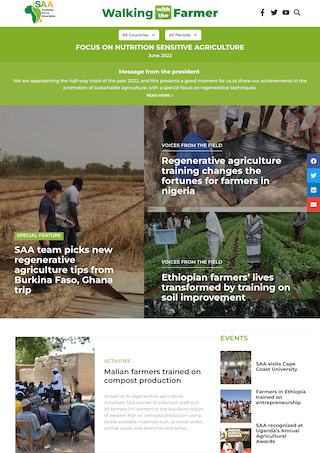
E-newsletter
"Walking with the Farmer"
SAA publishes a bimonthly e-newsletter reporting on SAA activities.
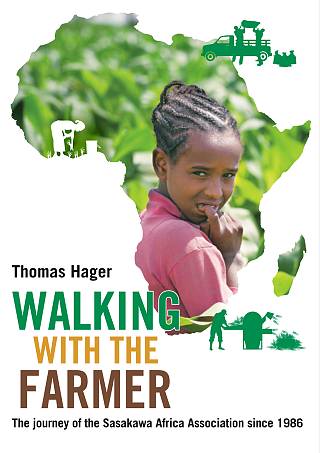
SAA history book
"Walking with the Farmer: The journey of the Sasakawa Africa Assoication since 1986"
This book chronicles the history of SAA from its inception to the present.
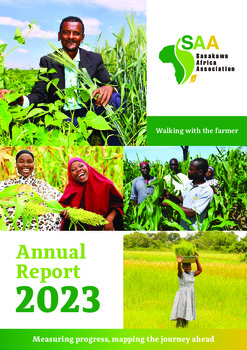
Annual Report
Annual Report FY2023
Annual Report FY2023 is available here.




